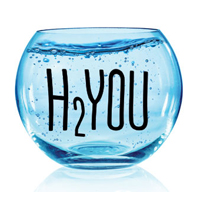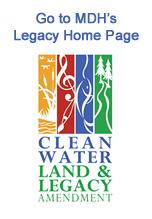Clean Water Fund: Contaminants of Emerging Concern (CEC)
MDH Legacy Initiatives
- Clean Water Fund Home
- Contaminants of
Emerging Concern - Groundwater Protection Initiative - Accelerated Implementation Grant
- Groundwater Restoration and Protection Strategies (GRAPS)
- Pathogen Project
- Private Well Protection
- Source Water Protection Planning and Grants
- Water Reuse
Related Topics
Environmental Health Division
Outreach and Education Grants 2012
Ce Tempoxcalli
Award Amount: $13,000 – Project Completed
Ce Tempoxcalli is a young, community based non-profit based in the Twin Cities. They utilize indigenous values, art forms, and cultural knowledge to construct a space where people of all backgrounds can come together to build identity, grow community economy, and create healthy relationships. Environmental justice issues and developing a healthy relationship with the Earth are important parts of their work.
MDH grant money allowed Ce Tempoxcalli to create and evaluate an education and outreach booth about CECs at the 9th Annual Chalchiutlicue Environmental Justice Summit at Mother Earth Fest. This culturally-relevant and bilingual booth increased awareness, engagement and positive water stewardship behaviors among the Latino population in the Twin Cities. Ce Tempoxcalli estimated that their presentations, booth promotion, and surrounding media campaign reached around 300,000 people. Many of these people are in communities that the Contaminants of Emerging Concern (CEC) program had not previously reached, such as people of color and those living in lower income areas.
Central Minnesota Water Education Alliance (CMWEA)
Award Amount: $26,000 - Projected Completed
This coalition of central Minnesota cities, counties and other organizations provides educational outreach to promote water quality and stewardship. Their mission is to develop and implement educational programs to encourage people in central Minnesota to protect their water resources through awareness and simple behavior changes. CMWEA uses a variety of methods to spread its messages, such creating a Top Ten Water Protection Tips blog, media ad campaign, and electronic billboard.
 CMWEA created media ads for four of their ten Top Ten Tips, with a month long media campaign for each tip. They used MDH grant money to create two more ads focused on CECs. The money also went to informational materials surrounding Pharmaceutical Drop Box locations in the region. CMWEA created educational kits for youth on the subject of CECs that they used at local water festivals. These materials allowed CMWEA to reach out and educate various age groups, especially youth, on CECs.
CMWEA created media ads for four of their ten Top Ten Tips, with a month long media campaign for each tip. They used MDH grant money to create two more ads focused on CECs. The money also went to informational materials surrounding Pharmaceutical Drop Box locations in the region. CMWEA created educational kits for youth on the subject of CECs that they used at local water festivals. These materials allowed CMWEA to reach out and educate various age groups, especially youth, on CECs.
Otter Tail County Public Health
Award Amount: $44,000 - Project Completed
This local public health agency in Otter Tail County, MN, works in partnership with Beck, Clay and Wilkin counties to implement evidence-based public health programming. Their “Partnership 4 Health” provides education and outreach related to drinking water, contaminants of emerging concern, and public health. These counties used MDH grant money to promote and support ongoing prescription drug take-back programs and hazardous waste collections in order to protect drinking water sources in their communities. They developed and distributed educational materials to key community audiences and participated in community events to encourage safe disposal of emerging contaminants. This project reached over 90 community partners throughout urban and rural central Minnesota.
River Keepers
Award Amount: $17,000 - Project Completed
This 24 year old Minnesota nonprofit organization advocates sustainable use of the Red River of the North. They work in water education, water quality, river safety, and river recreation and hold a youth water festival every year.
River Keepers received a planning grant to investigate their role in decreasing the amount of toxic household chemicals and pharmaceuticals entering the Red River of the North. They convened a project advisory committee, conducted an inventory of local options for pharmaceutical disposal and inventoried, media materials that support responsible pharmaceutical and household hazardous waste storage and disposal. This committee determined that little was known about CECs in local communities, and identified key audiences for outreach, as well as locations that could collect CECs. However, the committee also decided that baseline data about public knowledge on CECs needed to be gathered before any outreach or education activities could begin. Reducing CECs in this river is important as the Red River of the North is the primary source of municipal water for the communities of Moorhead and Dilworth, as well as numerous downstream communities.
